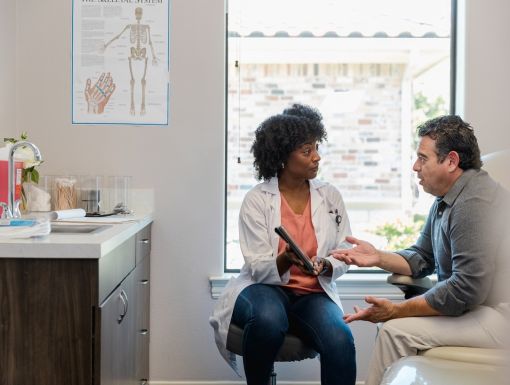
Can You Be Completely Cured of Lymphoma?
Lymphomas are cancers of the lymphatic system, and account for about half of the blood cancers that occur each year. Lymphomas are usually considered treatable, and many subtypes of lymphoma may be cured.
Treatment success rate can depend largely on several factors, including the type of lymphoma, the stage of the disease at the time it’s diagnosed, the patients’ age and overall health.
What are the different types of lymphoma?
The main types are Hodgkin lymphoma, sometimes called Hodgkin's disease, and non-Hodgkin lymphoma. There are many subtypes of lymphomas within those two broad categories.
Non-Hodgkin lymphoma is more common than Hodgkin lymphoma. According to the American Cancer Society, 80,350 people were expected to be diagnosed with non-Hodgkin lymphoma in 2025. The group estimated 8,720 people would be diagnosed with Hodgkin lymphoma in the same year.
The average age for people diagnosed with non-Hodgkin’s lymphoma is 60. Hodgkin lymphoma is most common in people between 15 and 24, as well as people over 60, according to the National Council for Cancer Research.
How is lymphoma diagnosed?
A lymphoma diagnosis requires your health care provider to get a sample from your lymph node or other blood tissue, often called a biopsy. In most cases, it is preferred to extract a lymph node from the body to examine it. This frequently requires a surgical procedure. Specialized doctors called pathologists use a microscope and other tests to determine if lymphoma is present, whether it is Hodgkin’s or non-Hodgkin’s, and what subtype it may be.
What are the treatment options for lymphoma?
Hodgkin lymphoma is typically treated with chemotherapy, sometimes in combination with radiation therapy. Radiation therapy is a type of cancer treatment that uses high doses of radiation to kill cancer cells and shrink tumors.
Non-Hodgkin lymphoma also is frequently treated with chemotherapy, though some early stages may be treated with radiation therapy alone. Some forms of non-Hodgkin lymphoma may also be treated with novel drugs, called small molecular inhibitors, that help avoid the need for chemotherapy.
In some circumstances, doctors can use bone marrow or stem cell transplantation to ward off the disease. In a bone marrow transplant, a patient's bone marrow is replaced with healthy cells through a process similar to a blood transfusion. The replacement stem cells can either come from your own body or from a donor.
Additionally, a relatively new form of cellular therapy, called chimeric antigen receptor T-cell (CAR T-cell) therapy is being increasingly used in more advanced cases of non-Hodgkin lymphoma with frequent success. CAR T-cell therapy involves altering the genes inside T cells to help them attack the cancer.
Many people who receive treatment for Hodgkin lymphoma go on to live long and active lives.
What is the survival rate for lymphoma?
Hodgkin lymphoma is viewed as “one of cancer's biggest success stories” according to the American Society of Hematology. More than 90% of patients survive more than five years, based on a report from the council for cancer research. Many of these patients are cured of their disease.
The story is slightly different for non-Hodgkin lymphoma. Studies show that overall, 73% percent of people with one of the many subtypes of non-Hodgkin lymphoma are alive five years after being diagnosed.
However, survival may vary greatly from one subtype of non-Hodgkin lymphoma to another. It is important to discuss with a medical oncologist regarding the prognosis of an individual subtype of non-Hodgkin lymphoma. Despite this variation in outcomes, almost all forms of non-Hodgkin lymphoma can be treated in a way that improves an individual’s survival and often quality of life.
Ongoing advances in all forms of lymphoma are leading to better outcomes every year. Many people are cured.
Carter Davis, MD, specializes in caring for patients with leukemia and lymphoma. Book an appointment with Dr. Davis.



